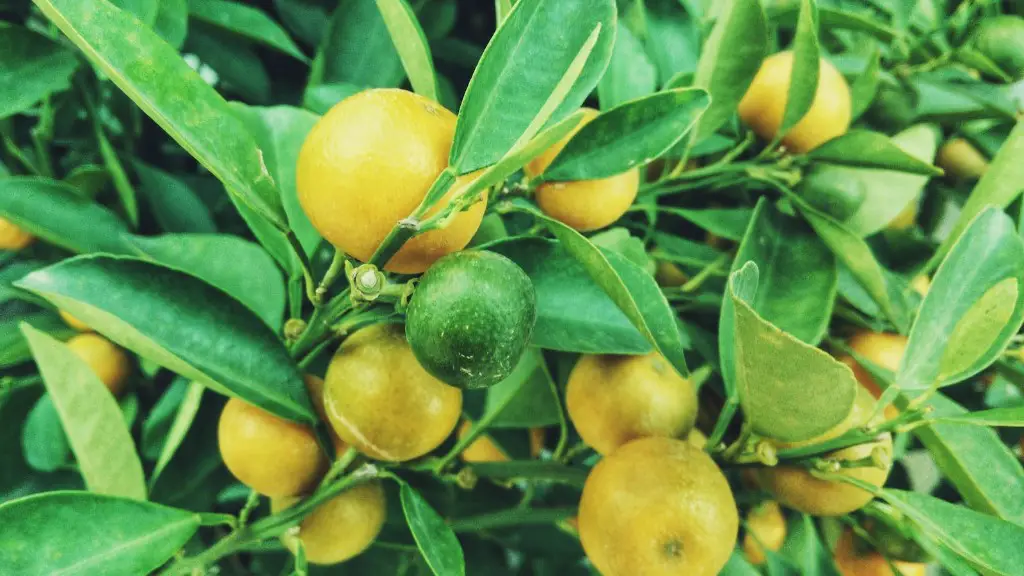Transplanting a lemon tree from a pot to the ground is generally a straightforward task that can provide years of abundant lemons and foliage for the home garden. However, the process should be done with care to ensure that the lemon tree takes root and flourishes. Here’s how to transplant a lemon tree.
Step 1: Pick the Right Spot
Select a sunny, sheltered spot and prepare garden soil with organic matter ahead of planting. Before transplanting the lemon tree, thoroughly soak the ground around the planting spot. Make sure the top of the rootball is kept level and two to four inches higher than the surrounding soil.
Step 2: Carefully Remove the Tree From the Pot
Use garden clippers and a pruning saw to free up the rootball if needed. Start by gently levering up the pot and then carefully cut away the plastic container. Do not lay the root ball with the top facing downwards, as this can damage some of the roots.
Step 3: Plant the Lemon Tree
Move the top edge of the rootball outward to create space for compost and soil. Then place the tree, tucking in and gently packing the soil around the roots. Secure the tree with stakes if needed, then use layers of mulch in the area to help retain moisture. Add a watering can filled with a liquid fertilizer to help nourish the tree.
Step 4: Water and Fertilize Thoroughly
Keep the lemon tree watered and mist it regularly on sunny days. Feed the tree with an organic fertilizer every month. Use a balanced, nitrogen-rich fertilizer, as it will promote healthy leaves, stems, and branches. Deadhead spent flowers when they appear.
Additional Practices for Transplanting a Lemon Tree
Cut off any dead or damaged branches when transplanting a lemon tree. This will reduce stress on the tree and help it establish its root system faster. Additionally, reduce heavy pruning just after transplanting to aid in minimizing stress. While transplanting your lemon tree, keep in mind that established lemon trees may suffer from transplant shock. If pruning is unavoidable due to the size of the tree, prune lightly, taking only small branches.
Protecting the Lemon Tree From Pests and Diseases
To protect the lemon tree from pests, it is important to regularly inspect its leaves and twigs for signs of infestation. Common pests include mealybugs, whiteflies, and scale insects. Check the branches and trunk for signs of powdery mildew. To combat this disease, prune the tree and reduce its stress levels. Lastly, practice pest control measures, such as biological control, organic sprays, and soil treatments, during transplanting and throughout the season.
Considerations For Transplanting a Lemon Tree
When transplanting a lemon tree to a larger container, replant with fresh potting soil every two or three years. Additionally, use caution when watering the tree since overwatering can cause root rot. If root rot persists, it will restrict water and nutrient uptake, resulting in yellow leaves and stunted growth.
Optimal Growing Conditions For a Lemon Tree
Lemon trees will grow best in full sun, protection from harsh winds, and well-draining soil with added organic matter to increase porosity. It is also vital to keep out signs of fungal decay, such as brown spots on the leaves. These can be treated with fungicides. Additionally, keeping the lemon tree in good condition requires regular watering and a balanced fertilizer every two weeks to reach its full-size potential.
Adding Mulch To the Soil
Adding mulch to the soil around the lemon tree will help reduce weeds, conserve moisture, and add organic matter to the soil. It is best to add a layer that is three to four inches deep and several feet in diameter. Spread the mulch around the rootball without directly touching it, so air and water can circulate around the tree and roots.
Routine Pruning Techniques For a Lemon Tree
Pruning encourages healthy growth, fruiting and flowering. Do your routine pruning in late winter or early spring, removing any broken, dead, or diseased branches first. Cut back newly-established branches to maintain the lemon tree’s height and shape. Then remove branches to promote air circulation, followed by thinning and shaping. Always use sterile tools and clean up dropped leaves and branches to reduce fungal infections.


